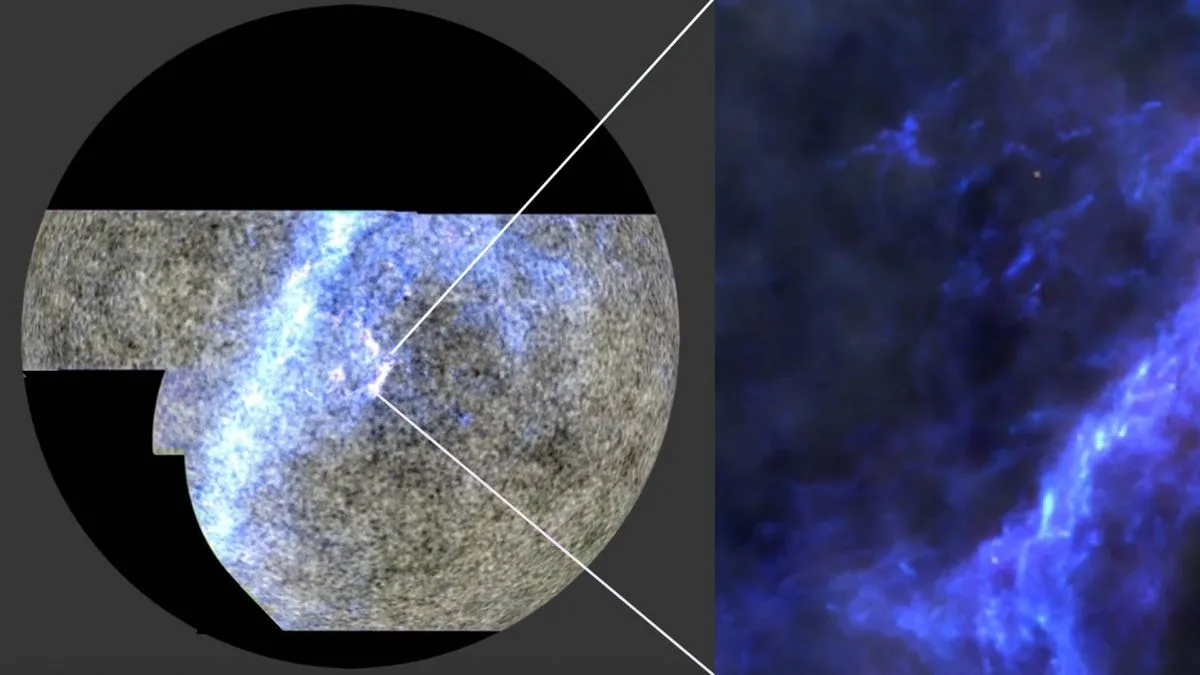
Astronomers have unveiled the clearest images yet of the *infant universe*, providing compelling evidence that supports the leading theory of the universe's evolution. These remarkable images capture light that has traveled for over 13 billion years to reach the Atacama Cosmology Telescope (ACT) in Chile. They depict the cosmos when it was merely 380,000 years old, akin to viewing baby pictures of our now middle-aged universe.
At this early stage, our universe emitted the cosmic microwave background, transitioning from an intensely hot and opaque state following the Big Bang. This emission enabled space to become transparent, marking the first accessible snapshot of our universe's infancy. The new images not only capture the transition from dark to light but also reveal in high resolution the formation and movements of gas clouds composed of primordial hydrogen and helium. Over millions to billions of years, these gases coalesced into the stars and galaxies we observe today.
Jo Dunkley, a professor of physics and astrophysical sciences at Princeton University and the leader of the ACT analysis, stated, “We can see right back through cosmic history—from our own Milky Way, out past distant galaxies hosting vast black holes and enormous galaxy clusters, all the way to that time of infancy.” She emphasized that by examining this simpler epoch, we can reconstruct the narrative of how our universe evolved into the rich and complex entity we inhabit today.
These groundbreaking findings were submitted to the Journal of Cosmology and Astroparticle Physics and presented at the American Physical Society meeting in California on March 19. An analysis of the new images revealed that the observable universe extends almost 50 billion light-years in all directions from Earth. Although the cosmos is estimated to be 13.8 billion years old, it has expanded significantly, allowing light and matter to spread out across vast distances.
The data suggests that the universe contains as much mass as 1,900 zetta-suns, equating to nearly 2 trillion trillion suns. Of this mass, only 100 zetta-suns are derived from normal matter—the visible and measurable kind dominated by hydrogen, closely followed by helium. The remaining 1,800 zetta-suns consist mainly of dark matter, accounting for 500 zetta-suns, and an astounding 1,300 zetta-suns attributed to dark energy, a mysterious force driving the universe's accelerating expansion.
The high-definition observations provided scientists with a unique opportunity to evaluate the validity of the prevailing model of the universe's evolution, known as the Lambda cold dark matter (Lambda CDM) model. The data revealed no indications of new particles or unusual physics in the early universe, reinforcing the robustness of current cosmological theories. “Our standard model of cosmology has just undergone its most stringent set of tests. The results are in, and it looks very healthy,” stated David Spergel, a theoretical astrophysicist and co-author of the study.
The latest observations also provided additional measurements that support previous findings, including a precise estimate of the universe's age and its rate of expansion, which stands at 67 to 68 kilometers per second per megaparsec (with 1 megaparsec equivalent to approximately 3.2 million light-years). This data represents some of the final results from the now-decommissioned ACT, which completed its observations in 2022. Erminia Calabrese, director of research at Cardiff University's School of Physics and Astronomy and a lead author of one of the studies, remarked, “It is great to see ACT retiring with this display of results.” She added, “The circle continues to close around our standard model of cosmology, with these latest results weighing in strongly on what universes are no longer possible.”